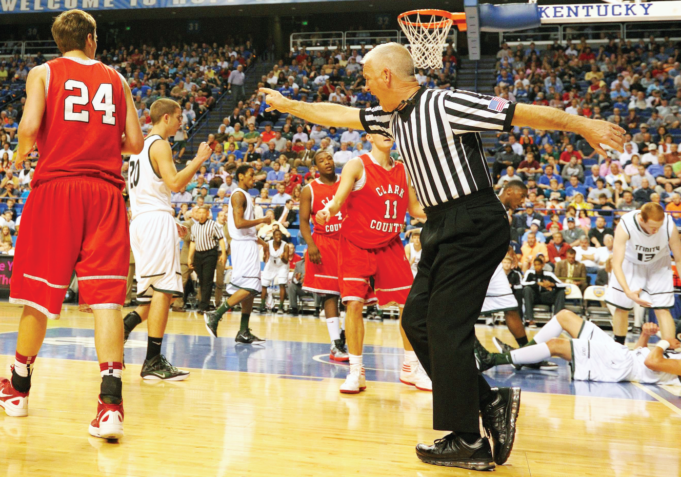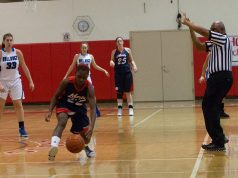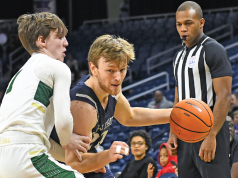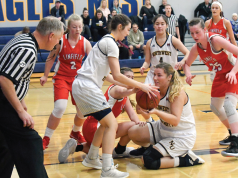It is understood that the goal of matching is to pair likenesses. Millions of dollars are being spent every day to find and make that perfect match. The desire to match fouls seems to have found its way into our game and some of it is believed to be as costly on a scale that is not so easily measured.
In a day and time when coaches, administrators and stakeholders at the highest levels are calling for more consistency from officials, we are doing our best to satisfy that cry. I don’t know officials who are not working to be their very best and to produce a consistent product on the floor. Some believe that consistency comes by way of making things look the same or as close to the same as they can become. Pairing likenesses and matching appears to have become a focus of many officiating crews. And while the motivation to be a matchmaker is connected to the concept of consistency, many can testify that the perfect match is most often not so perfect, nor does it produce the kind of consistency being demanded.
When we visit a salon or a barbershop and the technician makes a mistake on one side of your head, do we expect or demand that they make the same mistake on the other side so that the two match? That would certainly provide consistency. That idea is absurd, yet there are some who believe that when we don the black and white, that part of the unwritten code is that to be consistent, we should match plays on both ends of the court. The hope is that we are matching correct rulings, but the matchmaking game too often can translate into efforts to match no-calls and calls alike when not all are correct to begin with. Much like our salon/barbershop visit, the truth is that no one wants mistakes matched. We want “it” and all of “it,” done correctly the first time around.
When officials take the liberty to match a call with a similar previous call, is that promoting the kind of consistency that stakeholders are asking for? The answer is only when it is the correct call. And in matching calls, officials must ask whether the influence of a previous call skews their judgment on future calls. The answer is it could skew their judgment if the goal is too focused on matching calls. While 50-50 plays may call for similar calls, there are few plays that are truly 50-50 based on rule.
And if there is a mistake, we want “it” fixed immediately and certainly not reproduced in the name of consistency.
Officials and coordinators of officials alike want to represent each other well and to provide support both on and off the floor. Partners on the floor can do that by ruling similar plays in similar ways. That’s a good thing when the basis for the decision is on rules and not the influence of anything outside of the rules officials are asked to enforce. Pregame conversations regarding matching plays should be rooted in the rule on common plays such as legal guarding position, screens and other points of legal and illegal contact, as well as violations and behavior. That an official’s decision is correct by rule, yet does not happen to match a similar previous play, should call for an examination of the previous decision and not the decision of the person making the correct ruling. There is a good chance that a correct call can breed correct calls among crewmembers motivated by achieving correct-call accuracy.
Another culprit in the case for matching is the concept of fairness. As keepers of the game, it is the officials’ job to be fair. And isn’t it most fair to do the same thing on both ends of the court? If the shot clock stops working on one end, shouldn’t the officials turn off the clock on the other end so that each team is playing under the same conditions? That is the fairest thing to do, isn’t it? Matching what happens on one end to a similar occurrence on the other end seems fair.
While many things in and around our game may scream “fair,” our job as officials is to enforce the rules of the game even when things do not appear fair. The rules do not permit a working clock to be turned off. In fact, the rules require clocks that work. The fact that one of them decided to take the night off, for no good reason and in the middle of the game, does not give officials the liberty to set aside the rule that requires working clocks just to make things fair. How far will you go to make things fair and does that path take you away from or toward the written rule in the name of fairness? Stories abound of noble men and women dressed in black and white, standing firm in the face of opposition in a fight for justice and fairness. They later appear on no one’s roster or on the agenda for an NASO Summit forum on suspensions because their idea of fairness violated the rules they were hired to know and enforce.
The question becomes, are rules being supported or violated when officials determine to match plays? Everyone who chooses to play matchmaker must answer that question. If I penalize a legal defender on one end, I should not purposefully penalize a legal defender on the other end on a very similar play just so those two “like” plays look the same. I have no doubt that some disagree with that statement and the challenge is to find any rule, mechanic or code of ethics that permits officials to knowingly choose to miss something for any reason.
Despite the criticism officials receive, their profession is respected when they consistently enforce the rules regardless of time, score, opponent, location or any other influence. People want to know that officials cannot and will not be influenced by anyone or anything even if it appears to be the perfect match.
What's Your Call? Leave a Comment:
Note: This article is archival in nature. Rules, interpretations, mechanics, philosophies and other information may or may not be correct for the current year.
This article is the copyright of ©Referee Enterprises, Inc., and may not be republished in whole or in part online, in print or in any capacity without expressed written permission from Referee. The article is made available for educational use by individuals.


















